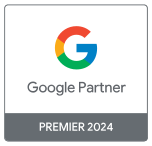
What are Performance Max campaigns and how do they work?
As we move towards a more automated digital marketing landscape, Google Ads’ Performance Max campaigns have come into the limelight.
What are Performance Max campaigns and how do they work?
Performance Max is a goal-based campaign type that uses AI and machine learning, structured in a way that makes advertising across all of the Google Ads inventory accessible from one automated campaign. The campaign can run across Search, Discover, Display, Gmail, Maps, and YouTube. Advertisers need only provide images, ad copy, and video, Google will do the rest. The idea is to run one campaign that reaches across all Google properties rather than create specialised ads for specific channels. As a goal-based campaign type, Google will use automated Smart Bidding based on the goals you set. Therefore it’s important to ensure you specify which conversions matter the most when creating these campaigns.
By way of advanced options, PMax campaigns can be supplied with product feeds, first-party audiences, and dynamic remarketing tags. Extensions are also available based on your goals, the campaign will suggest different extensions such as sitelinks, promotions, and callouts.
Performance Max campaigns are set to replace Smart Shopping campaigns which will be faded out towards the end of the year. There are 3 options to consider – you can either manually upgrade your Smart Shopping campaigns now, use an easy ‘one-click’ upgrade as of April, or Google will automatically upgrade your campaigns to PMax between July and September.

What are the 3 main advantages?
Firstly, the all-in-one automated format means less effort and time spent on building various campaign & more time free to allocate to the rest of your day!
Secondly, the PMax campaign type enables advertisers to include 90 character headlines within their ads, giving advertisers much more scope to write copy that delivers their key messages. And significantly more characters than the Expanded Text Ads & Responsive Search Ads formats where there is a headline limit of just 30 characters.
Lastly, URL Expansion helps to optimise the performance of the PMax campaigns. Using Final URL expansion, you can use the automated feature to select the most relevant landing page for your goal based on the user’s search query. This can help to reach more customers that may not have been reached through your regular campaign activations.
Are there any disadvantages?
It is worth noting that there are some limitations with the new campaign type. Due to the automated approach, artificial intelligence creates and tests the ads meaning there is a lack of control over what ads are presented and in what format. If you have a strict brand image, it may be less suitable as it is a little more difficult to control the look and feel.
Currently, there is a lack of visibility of granular data which makes it hard to report on performance and see how KPIs may be improved. The top-level performance insights are available but no further detail, which could be problematic for advertisers with the need to both justify and drive better performance through careful data analysis. Google has listened to concerns over the lack of reporting available and we expect to see updates to this later in the year. To exert some control, Google will be introducing account-level negative keywords meaning certain search terms can be excluded from the campaigns.
Should you run Performance Max campaigns?
If your campaigns generate regular and consistent conversion volume, and you have high-quality image assets available, then we would recommend starting with a 6-week trial to allow the machine learning algorithm to have sufficient data to compare performance. Testing is key. Run the trial alongside your wider strategy to measure the impact in full.
Interested in adding Performance Max campaigns to your PPC marketing strategy? Contact us today [email protected]















